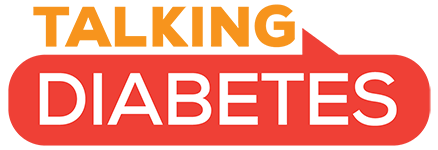How to Set Realistic Fitness Goals & Find Positive Motivation
Before you are able to make any meaningful changes to your health, fitness, and diabetes management, you need to two things:
- Clear and realistic goals for what you want to achieve
- The (positive) motivation that will allow you to work towards your goals on a daily basis
Once you are clear about your health and fitness goals and your motivation, you can start making plans for how to reach them. If you don’t know your goals, you will have no way to plan effectively or measure your progress and you will most likely lose your motivation pretty quickly.
The key to achieving fitness goals, especially, is to know exactly what it is that you actually want, and why you want it.
Specific Short-Term and Long-Term Goals
A popular structure for goal setting is called the SMART method. It’s a simple and easy to remember method that you can use for any kind of goal setting, not just for diabetes and fitness goals.
- Specific – Your goals should be clear and well defined (I want to lose weight is not a specific goal. I want to lose 5 pounds is).
- Measurable – You should be able to track and measure your progress towards your goal (“better diabetes management” is not measurable. An A1c of X.X is).
- Attainable – Your goals should be ambitious but realistic (having a dream to follow is great, but you also need down-to-earth goals that you know you can reach if you put in the work).
- Relevant – Make sure that reaching your goals will actually make your life better. Spend some time thinking about your goals and doing research if necessary.
- Time-bound – Always set goals with a specific timeframe so you know how long you have to reach them. It’s recommended to have both short-term (1-2 weeks) and long-term (3-6 months) goals.
Find Your Positive Motivation
The motivation to make any kind of change generally comes down to variations on two different themes:
- Positive motivation: “I want to achieve this goal that I am excited about.”
- Negative motivation: “I don’t like the way I look” or “I am afraid for my health if I don’t do something.”
Research shows that while negative motivation is very effective in getting people to start making a change, it almost never leads to long-term success. On the other hand, people who start making changes with a clearly defined positive motivation, based on realistic goals, tend to achieve the results they want both in the short term and the long term.
Unfortunately, finding negative motivation is a lot easier than finding positive motivation. For most of us, just looking in the mirror or visiting our endocrinologist can provide plenty of negative motivation.
We tend to be good at finding things we don’t like about ourselves, even if nobody else can see them. Finding your positive motivation is difficult and often takes an act of will in itself. It’s also something you need to maintain every day.
If you can find that positive feeling (whatever it may be for you) and remember it, you can turn it into your positive motivation. Whenever you don’t feel like exercising, testing your blood sugar, or eating healthy food, try to remember how you feel on the days where your diabetes management is spot on, and imagine that being every day. It isn’t easy, and it’s something you have to work on every day, but if you can manage it, it’s a really powerful motivation.
Lastly, tie your positive motivation to your short-term and long-term goals. Imagine how great you will feel when you reach your diabetes management and fitness goals and let that be your motivation!
The clearer you are about what you want and why you want it, the easier it will be to reach your diabetes management and fitness goals! To get started on your own goals and motivation, download a simple Goal and Motivation Printout.

